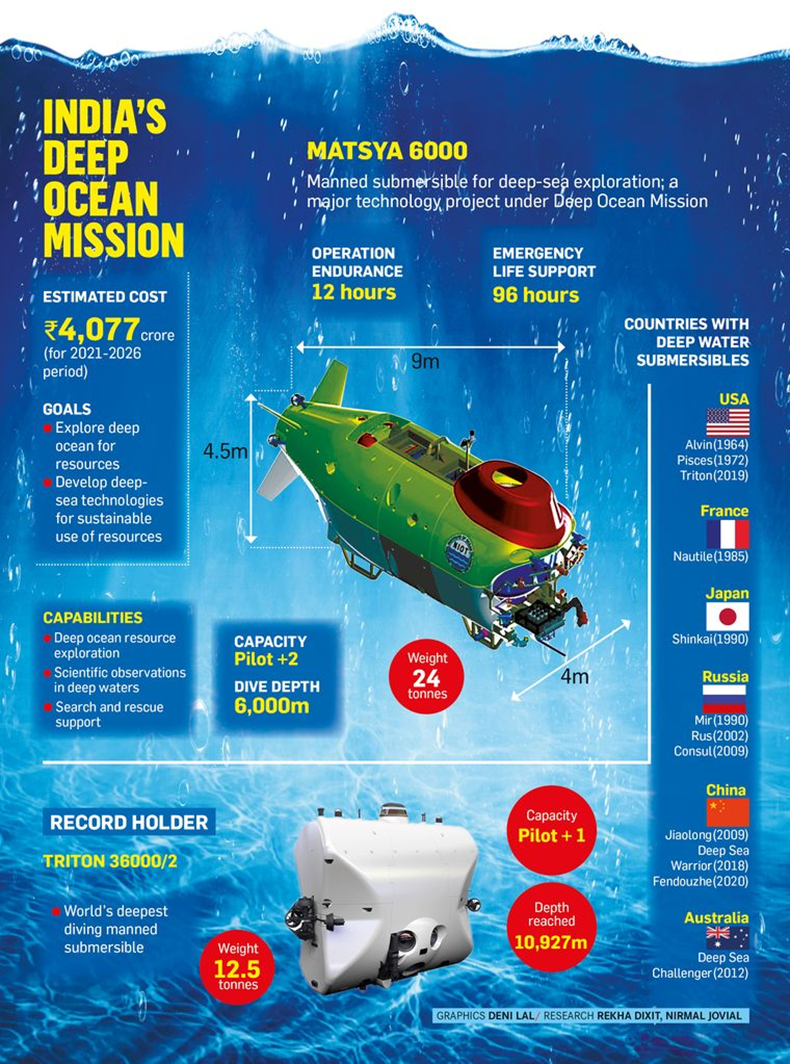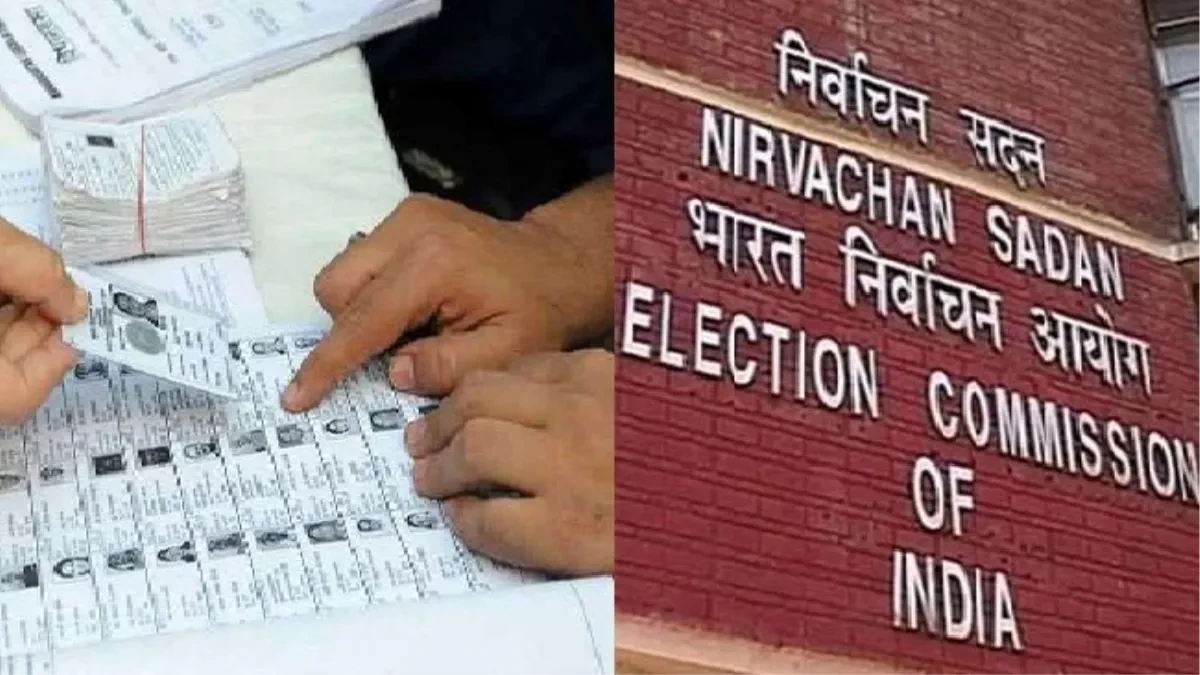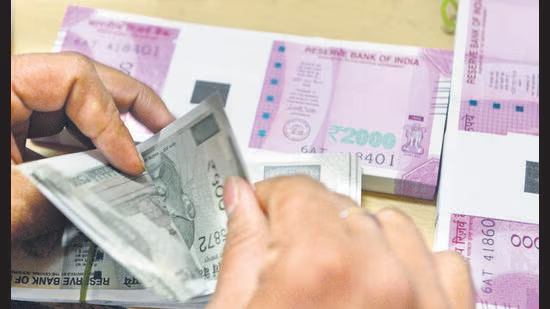- Courses
- GS Full Course 1 Year
- GS Full Course 2 Year
- GS Full Course 3 Year
- GS Full Course Till Selection
- Answer Alpha: Mains 2025 Mentorship
- MEP (Mains Enrichment Programme) Data, Facts
- Essay Target – 150+ Marks
- Online Program
- GS Recorded Course
- Polity
- Geography
- Economy
- Ancient, Medieval and Art & Culture AMAC
- Modern India, Post Independence & World History
- Environment
- Governance
- Science & Technology
- International Relations and Internal Security
- Disaster Management
- Ethics
- NCERT Current Affairs
- Indian Society and Social Issue
- NCERT- Science and Technology
- NCERT - Geography
- NCERT - Ancient History
- NCERT- World History
- NCERT Modern History
- CSAT
- 5 LAYERED ARJUNA Mentorship
- Public Administration Optional
- ABOUT US
- OUR TOPPERS
- TEST SERIES
- FREE STUDY MATERIAL
- VIDEOS
- CONTACT US
India’s Deep Sea Mission: Advancing the Blue Economy
India’s Deep Sea Mission: Advancing the Blue Economy
22-06-2024

Why in the news?
- India to become 6th country with Deep Sea Mission: India is set to join an elite group of countries with its own Deep Sea Mission, as announced by the Union Minister of State (Independent Charge) for Earth Sciences.
- Focus on Resilient Blue Economy: The mission aims to promote the blue economy and empower people whose livelihoods depend on the ocean and its resources.
- Multi-faceted Mission: The Deep Sea Mission includes mineral exploration, advancement of ocean sciences, exploration of marine flora and fauna, and conservation of marine biodiversity.
- National Institute of Ocean Technology's (NIOT) Contribution: NIOT's Matsyayaan 6000, a vessel capable of reaching depths of 6,000 meters, is an important development for the mission.
- Collaboration with ISRO: The Ministry of Earth Sciences is collaborating with the Indian Space Research Organisation (ISRO) to develop a "titanium hull" for the vessel, ensuring it can withstand extreme underwater pressure.
- Self-Floatation Technology: The mission incorporates the development of self-floatation technology to manage emergencies and enable submersion for 72 hours.
- Economic Impact: The Deep Sea Mission holds the potential to significantly contribute to the overall growth of the Indian economy.
What is the Deep Ocean Mission (DOM)?
The Deep Ocean Mission, spearheaded by the Ministry of Earth Sciences (MoES), comprises six pillars:
- Development of deep-sea mining technologies and a crewed submersible capable of exploring depths of 6,000 meters.
- Ocean climate change advisory services through extensive observations and modelling.
- Technological innovations for deep-sea biodiversity exploration and conservation.
- Deep-ocean survey to identify potential sites of multi-metal hydrothermal sulphides mineralization.
- Harnessing energy and freshwater resources from the ocean.
- Establishment of an advanced Marine Station for Ocean Biology.
DOM aligns with the 'New India 2030' vision, emphasising the blue economy as a central objective for India's growth. It is part of the United Nations' 'Decade of Ocean Science' (2021-2030) and complements Prime Minister Narendra Modi's vision for sustainably harnessing the ocean's potential for national development.
Progress on Pillar 1: Deep-Sea Mining Technologies and Crewed Submersible
Samudrayaan Initiative:
- Launched in 2021, with the goal of reaching 6,000 meters in the central Indian Ocean using the 'Matsya6000' submersible, which can accommodate a 3-member crew.
- Matsya6000 is equipped with scientific sensors, tools, and an operational endurance of 12 hours (extendable to 96 hours in emergencies).
Mining System:
- NIOT is developing an integrated system for mining polymetallic nodules from the central Indian Ocean bed, a mineral-rich region allocated by the United Nations International Seabed Authority (ISA).
- NIOT conducted deep-sea locomotion trials with the 'Varaha' underwater mining system at a depth of 5,270 meters in the central Indian Ocean, successfully collecting polymetallic nodules during the trial.
Significance of the Chosen Depth (6,000 meters)
- Strategic Depth: Targeting 6,000 meters serves a strategic purpose, allowing India to sustainably extract valuable resources like polymetallic nodules and sulphides.
- Resource Distribution: Polymetallic nodules are found around 5,000 meters deep, while polymetallic sulphides occur at approximately 3,000 meters. Operating at 6,000 meters enables India to cover depths of 3,000 to 5,500 meters, spanning its Exclusive Economic Zone and the central Indian Ocean.
Challenges in Deep-Ocean Exploration
- High Pressure: Exploring the deep oceans involves extreme pressure conditions, requiring meticulously designed equipment to withstand the force of water.
- Soft Ocean Bed: The soft and muddy ocean bed complicates landing and maneuvering for heavy vehicles.
- Material Durability: Electronics and instruments must endure underwater conditions, unlike space, where objects are designed for a vacuum.
- Extraction Challenges: Extracting materials from the ocean bed necessitates significant power and energy, with the need to transport extracted minerals to the surface.
- Visibility Constraints: Limited natural light penetration in deep waters poses visibility challenges.
Matsya-6000 and Varaha: A Vision for India's Ocean Exploration
- Matsya6000: India's flagship deep-ocean submersible, combining features of remotely operated vehicles (ROVs) and autonomous remote vehicles (AUVs). Accommodates a 3 -member crew, constructed from titanium alloy, and designed to withstand high pressures.
- Varaha: India's deep-ocean mining system, operating on the flexible riser technique. Successfully conducted deep-sea locomotion trials at a depth of 5,270 meters, setting a world record.
Unique Ecosystem:
India is poised to possess a comprehensive underwater vehicle ecosystem, encompassing deep-water ROVs, polar ROVs, AUVs, deep-water coring systems, and more.
Must Check: Best IAS Coaching In Delhi



